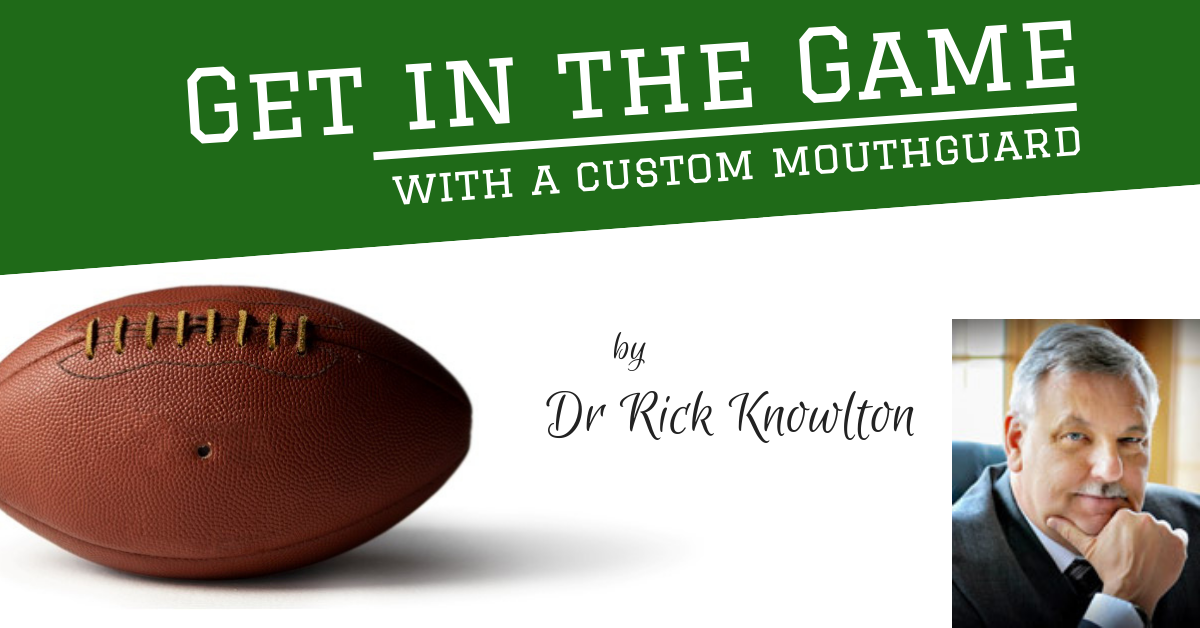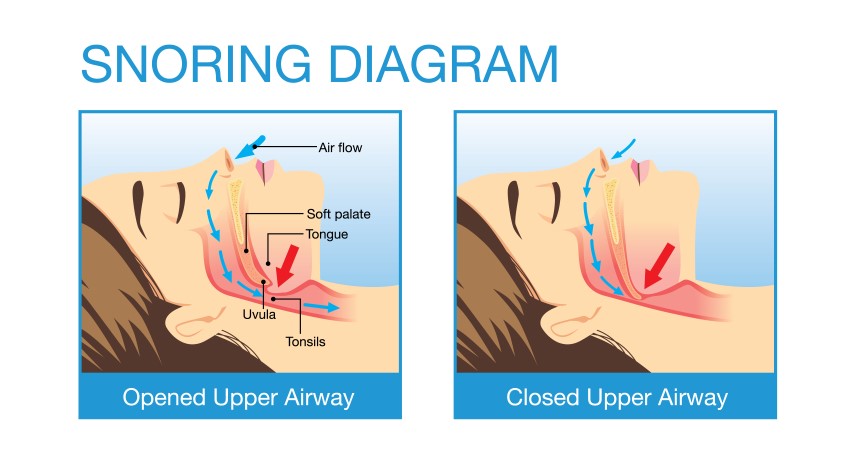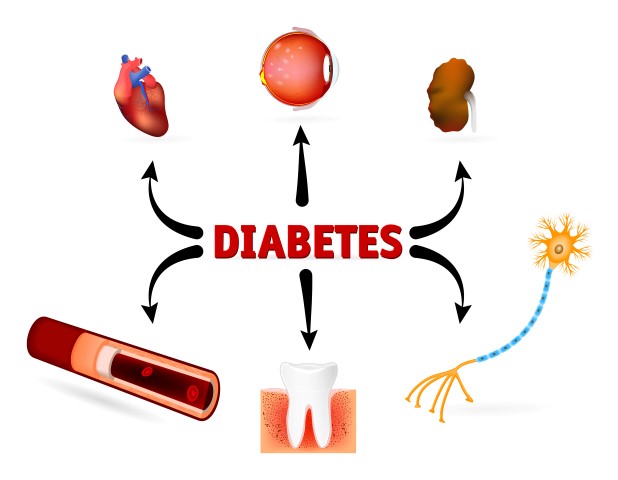Get In the Game by Having a Custom Fitted Mouth Guard Made for You
As our own children and the athletes in our practice get involved in organized sports this year, it is important for us as dentists to take a more active role in encouraging these players in all age groups to wear the proper protective equipment to prevent orofacial injuries. We must all take a proactive role in attempting to prevent orofacial injuries on the playground and in organized sporting events. Whether it be baseball, softball, soccer, football, hockey, wrestling, volleyball, rollerblading, skateboarding or mountain biking; these all pose significant risks.
Sports dentistry is a part of our practice that gives us the capability of fabricating quality protection for kids, neighbors, local teams, and our own children and their teammates.
It has been estimated by the National Youth Sports Foundation that over 5 million teeth are lost annually in sports related accidents, with over 300,000 orofacial injuries occurring yearly (1). According to the American Dental Association and the National Athletic Trainers’ Association’s newsletter, NATA News, athletes who do not wear mouth protection face a seven times greater chance of suffering an orofacial injury than those who use such protection (2).
Mouthguards in Sports Programs
Unfortunately, 90-95% of people who wear mouthguards go to the sporting goods stores to purchase them while only a little over 5% have them made by a dentist.
Since rules were established in regard to the use of headgear and mouthguards in football in the 1960’s facial and dental injuries sustained on the field have dropped over 48% to 0.07%(3). Though it has not been specifically proven in the medical and dental literature that a mouthguard will eliminate concussions, recent research presented at The 5TH International Conference on Concussion in Sport held in Berlin, October 2016 there was a paper presented that stated:
“The evidence for mouthguard use in preventing SRC is mixed, but meta-analysis suggests a non-significant trend towards a protective effect in collision sports, and rigorous case–control designs are required to further evaluate this finding.” (15)
Baseball and softball are the most popular organized sports with an estimated involvement of 25% of US children. Protective headgear was used regularly during organized games by about 35% of these children. Unfortunately, mouthguards were used by only 7% of these athletes (4).
Of the 5 million children enrolled in soccer leagues yearly in this country only about 7% wear mouthguard protection, while close to 1/3 of all injuries on the soccer field involve the head and face (5).
In basketball over 34% of the injuries involved the head, face, or teeth (6). It is understandable to see that dental injuries are the most common injuries sustained in sports. Of the dental injuries that occur 80% of these involve the anterior maxillary incisors (7).
Benefits of Mouthguards
The use of mouthguards has been found to reduce the severity and prevents the occurrence of injuries such as coronal and radicular fractures, corpus fractures of the mandible and fractures of the alveolar processes, condyles, and gonial angles. They have been found to prevent displacement and avulsion of teeth, along with soft tissue lacerations to the gingiva and oral mucosa. In addition, they can help to prevent some of the concussions that occur each year in athletics. According to the CDC an estimated 300,000 sports-related traumatic brain injuries (TBI’s) of mild to moderate severity most of which are classified as concussions occur in the United States each year (8). It has been estimated that brain injuries from sports make up approximately 20% of all brain injuries that occur each year in this country (9).
At the present time only boxing, amateur lacrosse, football, and ice hockey require the use of mouthguards (10). It has been strongly urged by the Academy of Pediatric Dentistry for the mandatory use of mouthguards for baseball, softball, and basketball at the youth and high school levels (11).
The Functions of Mouthguards
The benefits of wearing a mouthguard are numerous. A properly made and worn mouthprotector can help to hold the soft tissue of the lips away from the teeth thus helping to prevent lacerations and bruising. They help to cushion the teeth from direct blows and distribute forces that could fracture or displace the anterior teeth. They also help to prevent teeth in the opposing arches from violent contact, which might chip or fracture them. A properly fitting mouthguard will provide support for the mandible, absorbing forces that could fracture the angle of the mandible or the condyles. It can also minimize a potential concussion by preventing the upward and backward displacement of the condyles against the skull.
Types of Mouthguards
The term mouthguard can involve a number of different types with varying degrees of protection, cost, and comfort. The store-bought Stock mouthguard may not provide a good fit and comfort to the wearer because it is not intended to conform to the individual’s mouth. It allows for tooth movements in the mouth and therefore a number of orthodontists encourage them because of this freedom of movement.
Another store bought mouthprotector is the Boil and Bite mouthguard. This is the most common one sold and is shaped by heating the material in boiling water, placing it then in cold water and then forming it in the mouth.
A dentist or dental laboratory makes custom mouthguards. The Custom Vacuum Formed mouthguard is fabricated by heating the material, placing it over a stone model of the patient’s mouth and suctioning it down by vacuum to conform to the shape of the mouth and teeth.
The Type IV is considered to be the state of the art presently. The Custom Pressure Laminated is made in layers. The laminate sheets are heated and placed over the stone model as in the vacuum formed. The difference is that these layers are pressed onto the model or previously laminated mouthguard under high pressure.
Advantages of Custom Mouthguards
The Pressure Laminated and the Vacuum Formed mouthguards have several advantages over store bought ones. They remain in place far better during activity. This allows for much more effective communication. Interference with breathing is minimized. They show less wear in chewing and biting. By being more comfortable to wear, they are worn more regularly by the participants.
Of the 4 general types available (stock, boil and bite, vacuum formed, and pressure laminated) the Custom Pressure Laminated is considered to be superior because:
- Commercial mouthguards (stock and boil and bite) lost most of their thickness in the occlusal chewing surfaces by 70-99% when manufacture’s instructions were followed.
- Dental custom-made vacuum formed mouthguards decreased in thickness more than 25% while some surfaces decreased by more than 50% (11).
- Vacuum Formed though significantly superior to store bought mouthguards only retain their shape at best for about 3-4 weeks after delivery.
- The Pressure Laminated will allow the lamination of layers. This can be done using hard or soft layers of laminates. This allows a dentist to custom make the thickness or rigidity of the mouthguard to fit the particular sporting event and needed protection. These machines have 10x the pressure of vacuum systems. Since pressure is even it allows for a uniform thickness of the mouthguard
Sports Mouthguards Are Not Created Equal
Pressure laminated mouthguards are substantially superior to all other types. They are the only types that can be counted on to offer the best protection for our children’s teeth during all sports activities (12). It has been found that the store-bought boil and bite mouthguards provide a false sense of protection due to the dramatic decrease in thickness when an athlete bites it into place during its softened state.
References
- American Dental Association, Council on Dental Materials, Mouth Protectors and Sports Team Dentists, JADA 1984 109.84-7
- NATA News, National Athletic Trainers Association, October 1995.
- Flanders, Bhat, The Incidence of Orofacial Injuries in Sports, JADA Vol. 126, April 1995: p. 491-6.
- American Dental Association, JADA April 1996.
- National Institute of Dental Research, January 1996.
- American Dental Association, JADA April 1995.
- Dental Injury Fact Sheet, National Youth Sports Foundation for The Prevention of Athletic Injury Inc, Needham Massachusetts, 1992.
- Centers for Disease Control, Sports-Related Recurrent Brain Injuries, March 14, 1997.
- Sosin, Sniezek, and Thurman Brain Injuries, 1996.
- Andreason, Saunders, 1981.
- Academy of Sports Dentistry, December 1991.
- Park, Shaull, Overton, Donly, Improving Mouthguards, J. Prosthet Dent 1994, 72(4): 373-380.
- Padilla, 15th Annual Symposium of Sports Dentistry, May 1996.
- Park, First International Symposium on dental Materials, August 1993.
- 5THInternational Conference on Concussion in Sport held in Berlin, October 2016 http://bjsm.bmj.com/content/early/2017/04/26/bjsports-2017-097699



